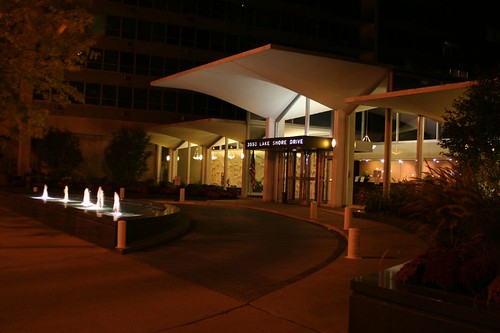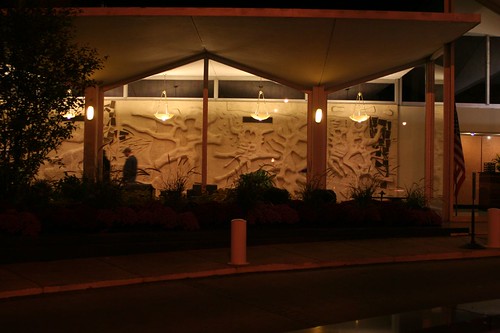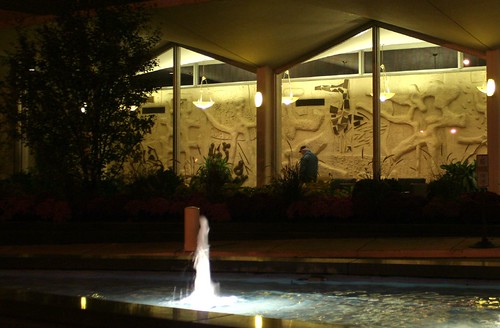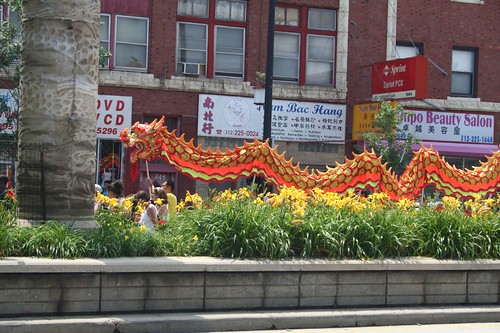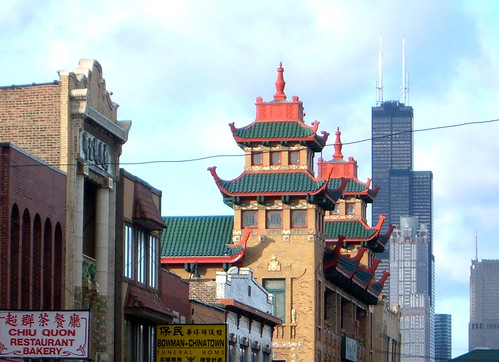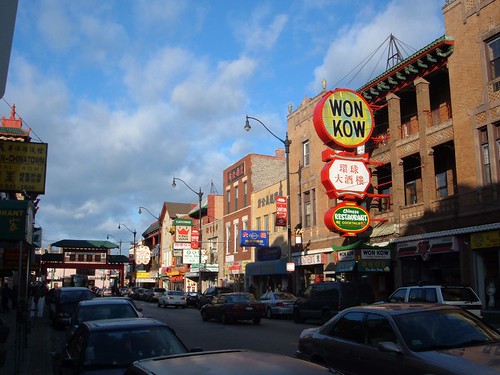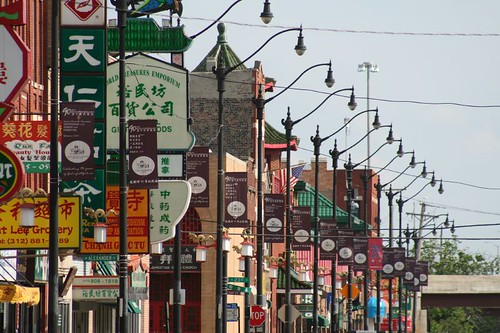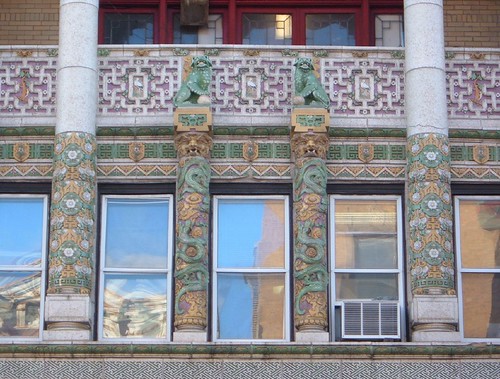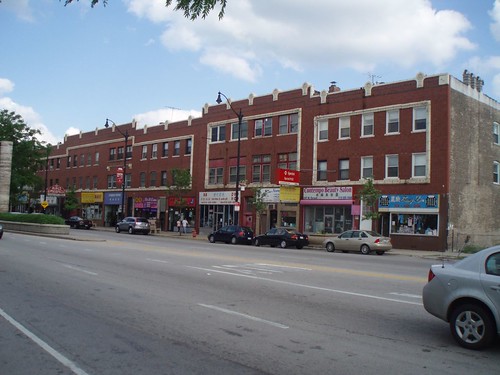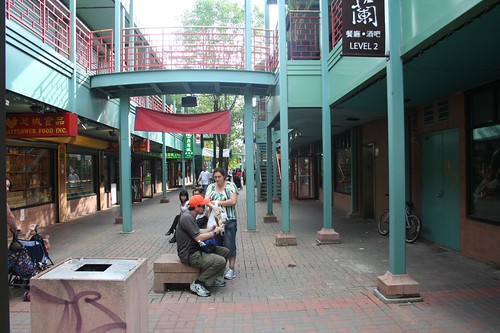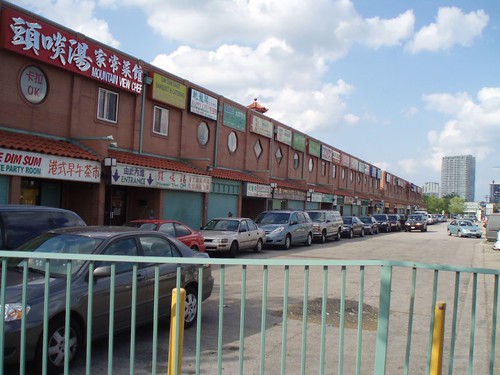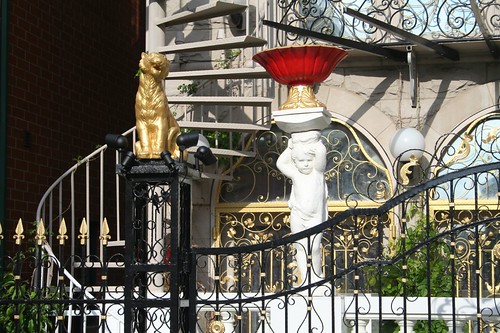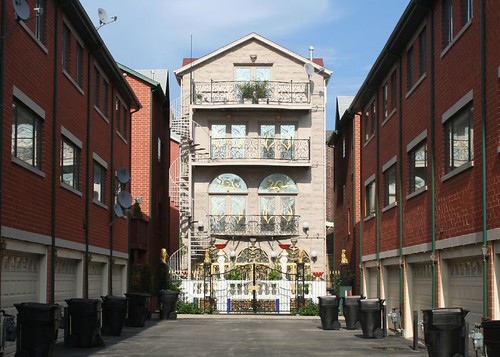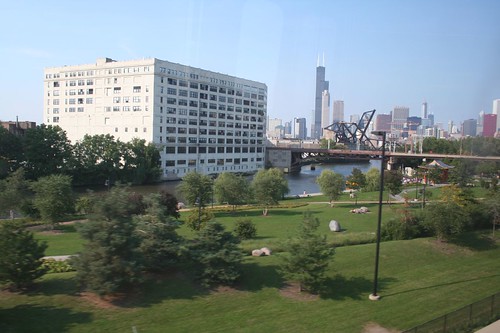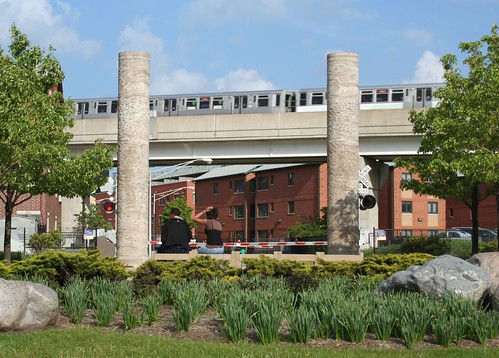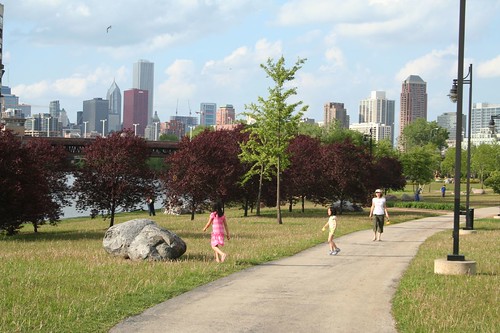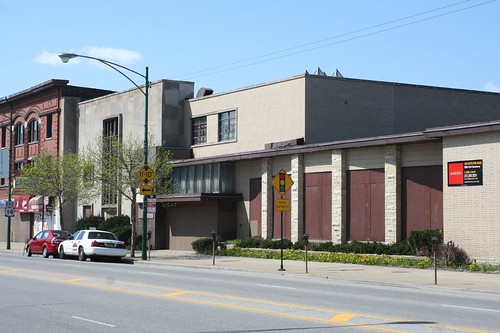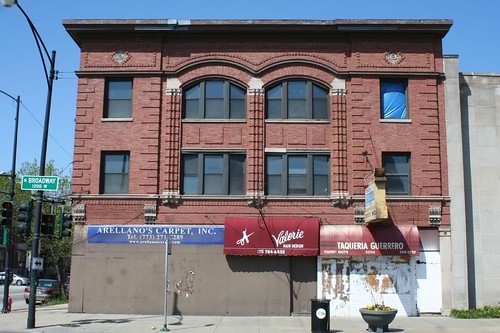St. Gertrude (9613 Schiller Boulevard, Franklin Park, west side) isn't all that striking from the outside. It has bold massing and a strange hipped A-frame structure that makes it resemble a giant tent, but everything on the outside essentially exists to service the spaces inside.
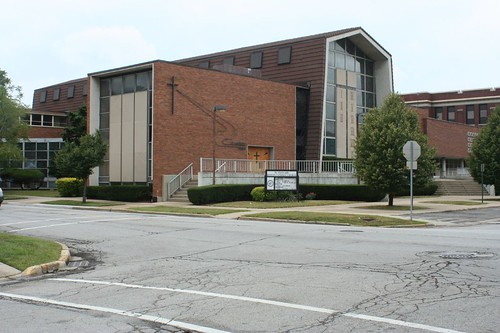
And what spaces they are!
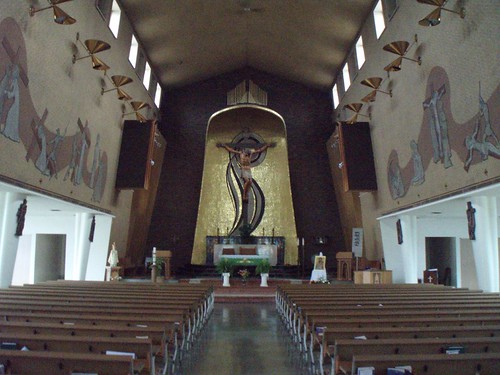
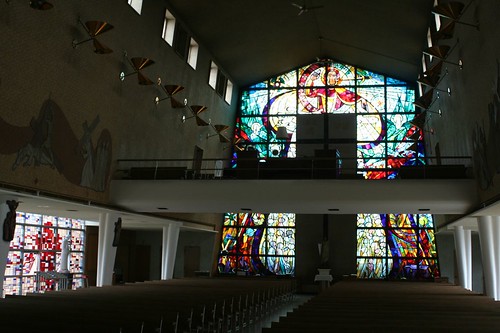
With its Flagrantly Fifties styling and decor, St. Gertrude has become one of my favorite local churches.
It's not just decorative flash, either. The architects pull a pretty slick little trick with the side aisles. Though the walls are a solid mass descending from the ceiling, they suddenly stop about ten feet from the floor, leaving only slender tapered columns to hold up the towering height above. The openings allow the floor space to expand outward, where a solid wall of stained glass creates a beautiful space.
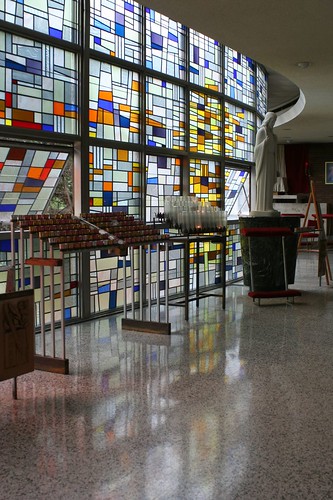
Because so much visual and actual weight is crushing down on those columns, you kind of expect something similar to be happening with the side aisles. I stared at that stained glass side wall for a very long time, trying to figure out what held up the roof. Turns out the thicker window mullions are structural -- there's nothing above the ceiling, and no other columns anywhere.
As if that wasn't enough, the balcony floats freely across the sanctuary, a bridge supported only at its ends, as seen in the sanctuary view at top.

The lovely stained glass was designed by Peter Recker for Conrad Schmit Studio. A cavalcade of Judgement Day images cascades down the rear wall of the sanctuary (and you can tell Recker is fighting against that grid of window mullions -- look how Jesus's head is located just off-center), but it's the sidewalls that I love best, where light is filtered through a dazzling array of abstract color patterns.
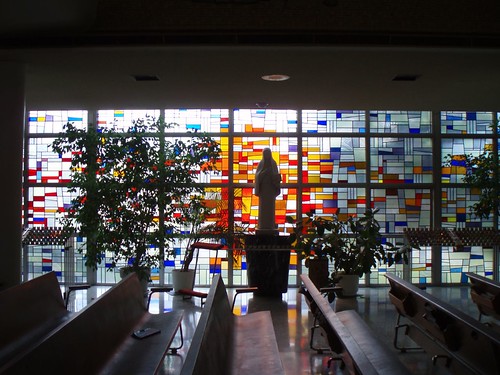
Recker also did the Stations of the Cross.
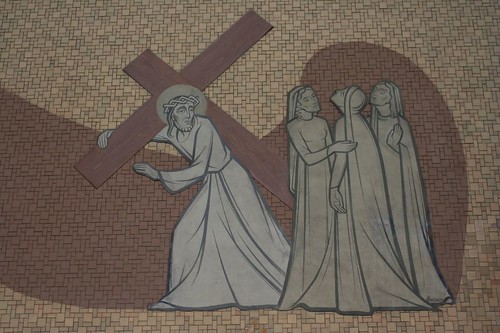

The curved wall behind the crucifix bears a startling resemblance to the focal point in the chapel of
St. Joseph Hospital, and sure enough, it's by the same architecture firm, Belli & Belli, who were responsible for a lot of the most awesomely crazy Modernist buildings in Chicago and its suburbs.
Plenty of spaces beyond the sanctuary offer interest as well. The protruding wings contain foyer space and stairwells to the balcony. The stairs are floating masses of terrazzo, with stylized railings, rising alongside a wall flecked with a grid of small window openings. Elaborately worked iron gates stand nearby as well.

The east wing contains the only real aberration in the building; a bathroom has been rather clumsily and awkwardly shoehorned into the end of the wing, complete with a false ceiling that one can look down on from the stairs. On the balance, it's a minor complaint, though.
I love a lot of church buildings, but this is one of the few that keeps me going back again just to absorb its spaces and soak in its architectural glory.








